43 salt on food labels
Understanding food labels | Diabetes UK The labels show how many calories are in the food or drink and are also colour coded to show whether the food is low (green), medium (amber) or high (red) in fat, saturated fat, sugar and salt. The information on the front of the pack also tells you how the portion of the food contributes to the Reference Intake (RI) of an adult. Learn About Salt Free Food Labels | Chegg.com Salt Free Food Labels Definition Salt-free food labels appear on certain food packages that have very negligible sodium content. A low-sodium diet contains 1500-2400 mg of sodium per day. A low-sodium diet is very important for the management of hypertension, kidney, liver failure, or even liver dysfunction. Overview of Salt-Free Food Labels
Sodium and Food Labels | Sutter Health 2 green onions: 4 mg sodium. 1 tablespoon low-sodium sweet pickle relish: 50 mg sodium. Total = 783 mg sodium. Per serving (2): 392 mg sodium. Add to your meal: 2 slices no-salt-added wheat bread: 20 mg sodium. 1 cup grapes: 3 mg sodium. 1 cup low-fat milk: 125 mg sodium. Total for one meal = 540 mg sodium.

Salt on food labels
Understanding Food Labels | The Nutrition Source | Harvard T.H. Chile implemented the Law of Food Labeling and Advertising in 2016, comprised of mandatory front-of-package (FOP) warning labels, restrictions on child-directed marketing, and the banning of sales in schools of all foods and beverages containing added sugars, sodium, or saturated fats that exceeded set nutrient or calorie thresholds. [1] Making Sense of Food Labels | ADA - American Diabetes … These food labels are especially helpful if you use carb counting to plan your meals! If you get tripped up on food content claims, you’re not alone. Fat free vs. low fat vs. reduced fat. ... Sodium free or salt free: less than 5 mg of sodium per serving; Very … PDF CheCk Food LabeLs food restaurant 1 oz slice American cheese, processed (packaged or deli) 1 cup canned pasta with meat sauce (packaged) 450 - 1,050 510 - 760 430 - 900 100 - 940 710 - 1,690 330 - 460 530 - 980 • sea salt has about the same amount of sodium as table salt. 6 • seasonings with the word salt, like garlic salt or onion salt, have ...
Salt on food labels. PDF Reading Food Labels to Look for Sodium - ksw-gtg.com Food and Drug Administration regula-tions, no manufacturer can say that their product is "low-sodium" unless they can prove that claim. Learning to read food labels is a good first step in a sensible eating plan. If the Label Says: One Serving of the Product Has: Sodium-free, salt-free or no sodium Less than 5 mg of sodium and no Watching Salt? Here's How to Decode Food Labels - Cooking Light "Low sodium," "very low sodium," and "salt- or sodium-free" on food labels translate to less than 140, 35, and 5mg per serving, respectively. These front-of-the-package claims can help you spot legit lighter-sodium products at the supermarket—look for low sodium chicken broth, low sodium canned beans, low sodium bread, and low sodium soy sauce. raisingchildren.net.au › nutrients › food-labelsFood labels & nutritional information | Raising Children Network Sep 23, 2020 · The nutritional information on food labels helps you work out how healthy a food is. But keep in mind that some of the healthiest foods can be unlabelled – fresh fruit and vegetables, wholegrain breads, nuts, lentils, beans, fresh lean meats and fish. Ingredients on food labels. In Australia, food manufacturers must be truthful on their food ... Labelling requirements for salt - Food labels - Canadian Food ... Diet specific claims; Nutrient content claims; Diet specific claims. A salt substitute that meets the compositional and labelling criteria for a free of sodium or salt claim or for a low in sodium or salt claim may be represented as a food for special dietary use, such as "For Salt Free Diets" or "For Salt Reduced Diets" [B.24.003(1.1), FDR]. Refer to item h) in the Summary table for sodium ...
What Sodium Labels Mean: A Guide to Decoding Sodium Labels Reduced (or Less) Sodium: This label means that the sodium level in the product has been reduced by 25 percent per serving from the original or a competitor's product. And if that product started with over 500mg sodium per serving, then you're still talking about 375mg of sodium per serving. Salt and Sodium - A guide for Food Labelling - Medic8 A good rule of thumb is to multiply the amount of sodium in a food product by 2.5. If a food contains 2 grams of sodium then it will contain 5 grams of salt: 2 grams of sodium x 2.5 = 5 grams of salt (in total) This will give you both the salt and sodium levels. › food › nutritionIs Sodium the Same Thing as Salt? - Academy of Nutrition and ... Choose foods with less than 120 milligrams of sodium per serving. Look for the words salt-free, sodium-free, very low sodium and low sodium on the label. Double-check sodium content of foods with labels that read unsalted, no salt added, reduced sodium or lower sodium. These items may still be high in sodium. How to Read Salt Labels | Cooking Light When food companies make sodium claims, they have to follow labeling rules. For the consumer, the tricky part is that there are four claims. Two apply when a company is comparing their food to a loosely defined fully salted version. One refers to a specific sodium level, another to whether salt has been added.
how to understand food labels - Eat For Health Sodium (Salt) Choose lower sodium options among similar foods. Food with less than 400mg per 100g are good, and less than 120mg per 100g is best. Ingredients Listed from greatest to smallest by weight. Use this to check the first three ingredients for items high in saturated fat, sodium (salt) or added sugar. Other names for ingredients high in Is Sodium the Same Thing as Salt? - Academy of Nutrition and … 8.8.2019 · Adding more salt at the table also adds to high intakes of sodium — one teaspoon of salt has 2,300 milligrams of sodium. If you are 14 years of age or older and eat more than 2,300 milligrams of sodium per day, the current health recommendation is to cut back on your daily intake of sodium. Sodium on the Nutrition Facts Label | FDA - U.S. Food and Drug ... Most Americans eat too much sodium and diets higher in sodium are associated with an increased risk of developing high blood pressure. The Nutrition Facts label is a handy tool you can use every... Salt and Sodium | Nutrition.gov Learn more about salt and sodium in your diet and how it affects your health. Find resources and tips for reducing the amount in your diet while keeping the flavor. ... Includes healthy food choices, cooking ideas, information on shopping and reading food labels. Tips to Eat Less Salt and Sodium. HHS, National Institutes of Health ...
Sodium in Your Diet | FDA - U.S. Food and Drug Administration Read the Nutrition Facts label Compare and choose foods to get less than 100% DV (less than 2,300 mg) of sodium each day. Prepare your own food when you can Limit packaged sauces, mixes, and...
› how-to-read-food-labelsHow to read food labels | healthdirect Energy: A kilojoule is a measure of energy. To lose weight, you need to eat and drink fewer kilojoules (kJ) than you use. You should limit your intake of discretionary or junk foods — i.e. those that have more than 600kJ per serve.
Reading labels - Action on Salt Look at the weight of the packet as a guide. Step 1 - Calculate how much salt there is per gram by dividing the amount of salt per 100g by 100 Step 2 - Check the weight of a recommended portion as stated on the pack Step 3 - Finally, work out how much salt there is per portion by multiplying the figures from step 2 and step 3 FoodSwitch
AMA Wants Warning Labels on High-Salt Food - Organic Consumers Association Americans eat almost twice the amount of salt they should, and that contributes to high blood pressure and heart problems, the AMA says. Labels with pictures of salt shakers bearing the word "high" and red exclamation marks might help consumers think twice about eating high-sodium foods, suggested an AMA council report that led to the new policy.
Food Labels | CDC - Centers for Disease Control and Prevention 23.4.2021 · Food Labels. Español (Spanish) Related Pages. Understanding the Nutrition Facts label on food items can help you make healthier choices. ... Eat fewer foods that are higher in added sugars, saturated fat, and sodium (salt), and avoid trans fat.
Be Salt Smart | MyPlate Look for canned vegetables labeled "no added salt." Look for cue words Items that are "pickled," "brined," or "cured" tend to be high in sodium. Include these foods in your meals sparingly. Put together meals at home Making your own meals gives you more control over the salt you eat. Taste your food before adding salt from the shaker.
How to Convert Sodium to Salt for a Food Label - Positive ID Labels Salt is Sodium Chloride at a ratio of 1:1 The atomic mass of Salt is 22.99 (1) + 35.45 Salt has an atomic mass of 58.45 58.45 divided by 22.99 = 2.542 2.542 can be rounded to 2.5 Here endeth the chemistry lesson and the headache! If you need help with nutrition labelling for food labels, call us on 01332 864895 or fill in the form below.
How to Read a Food Label to Limit Sodium: Care Instructions The label lists the ingredients in a food in descending order (from the most to the least). If salt or sodium is high on the list, there may be a lot of sodium in the food. Know that sodium has different names. Sodium is also called monosodium glutamate (MSG), sodium citrate, sodium alginate, and sodium phosphate. Read Nutrition Facts labels
Potassium Chloride Renamed on FDA Food Labels - LabelCalc In this industry guideline, food products containing potassium chloride must identify this ingredient as potassium chloride salt on its food label. According to the Food and Drug Administration, on average, Americans consume nearly double the daily recommended amount of 2,300 mg of sodium. This heightened consumption is not a result of the ...
› managing › eat-wellFood Labels | CDC - Centers for Disease Control and Prevention In general, eat more foods that are higher in vitamins, minerals (such as calcium and iron), and fiber. Eat fewer foods that are higher in added sugars, saturated fat, and sodium (salt), and avoid trans fat. Keep in mind that the % Daily Value of each nutrient, such as total fat of 10% in the example below, is based on eating 2,000 calories a day.
Different Names for Sodium in Food | Healthy Eating | SF Gate Sodium might also be labeled as baking soda, baking powder, monosodium glutamate (MSG), disodium phosphate or salt. Recommended Intake Healthy adults should consume no more than 2,300 milligrams of...
Salt: the facts - NHS Check salt on labels. In the UK labels on pre-packed food must say how much salt they contain. Look out for the salt content in the everyday foods you buy, and choose lower-salt options. Most pre-packed foods have a nutrition label on the back or side of the packaging. Many foods also display information about the salt content on the front of ...
Food Labels | Nutrition.gov Food and Drug Administration (FDA) regulates the safety of food for humans and animals, including foods produced from genetically engineered (GE) plants, sometimes referred to as "genetically modified organisms" (GMOs). Find out more about the safety of GE plants, and how they are regulated here.
How to understand food labels | Eat For Health The Nutrition Information Panel on a food label offers the simplest and easiest way to choose foods with less saturated fat, salt (sodium), added sugars and kilojoules, and more fibre. It can also be used to decide how large one serve of a food group choice or discretionary food would be and whether it's worth the kilojoules.
› sites › defaulthow to understand food labels - Eat For Health Sodium (Salt) Choose lower sodium options among similar foods. Food with less than 400mg per 100g are good, and less than 120mg per 100g is best. Ingredients Listed from greatest to smallest by weight. Use this to check the first three ingredients for items high in saturated fat, sodium (salt) or added sugar. Other names for ingredients high in
How do you read a food label for salt / sodium? Many labels provide sodium content but not the salt content which can be confusing. If the salt content is not available on a label you can calculate it from the sodium content using the following: Sodium x 2.5 = salt content or Salt ÷ 2.5 = sodium content
Reduced Salt And Food Labels - Blood Pressure Monitoring Salt Cuts - Read the Label. Salt increases blood pressure in 30 percent of the population that does not have high blood pressure. Salt does not increase blood pressure readings in 70 percent of the population that does not already have high blood pressure. Data suggest that less-well-educated groups, and blacks, are more likely to have high ...
What do the sodium (salt) numbers mean on food labels? - Dr. Gourmet For sodium, the Nutrition Facts label is required to list the number of milligrams of sodium per serving. For instance, in the Cheeseburger Macaroni Hamburger Helper the sodium per serving is listed as 760 milligrams (mg). To make it a bit easier the regulations also require that the percent of daily recommendations (RDA) is listed as well.
How to read food labels | healthdirect Sugar: Sugar is a type of carbohydrate. It is better to choose healthier carbohydrates and to limit foods that are high in added sugars. Fibre: High fibre foods such as wholegrain bread and cereals improve digestion and help you to feel full. Sodium: This tells you how much salt the product contains. Eating too much salt is linked to high blood pressure and can lead to heart disease, …
About Sodium - Centers for Disease Control and Prevention Sodium Reduction is Everywhere. Types of food matter: More than 40% of the sodium we eat each day comes from just 10 types of foods, ranging from the number 1 source—breads and rolls—to eggs and omelets, which are 10 th on the list. Sources of food matter: About 65% of sodium comes from food bought at retail stores, where you can look for ...
Reading Labels - World Action on Salt & Health Some food labels may only state the sodium content. To convert sodium to salt, you need to multiply the amount by 2.5. For example, 1g of sodium per 100g = 2.5 grams of salt per 100g You then need to know the weight of the serving portion in grams e.g. 30g Then divide the concentration of salt per 100g by 100 and multiply by the serving size.
› nutritionsource › food-labelUnderstanding Food Labels | The Nutrition Source | Harvard T ... Chile implemented the Law of Food Labeling and Advertising in 2016, comprised of mandatory front-of-package (FOP) warning labels, restrictions on child-directed marketing, and the banning of sales in schools of all foods and beverages containing added sugars, sodium, or saturated fats that exceeded set nutrient or calorie thresholds. [1]
Food labels - NHS Some front-of-pack nutrition labels use red, amber and green colour coding. Colour-coded nutritional information tells you at a glance if the food has high, medium or low amounts of fat, saturated fat, sugars and salt: red means high amber means medium green means low In short, the more green on the label, the healthier the choice.
Food labels & nutritional information | Raising Children Network 23.9.2020 · Food labels are included on all food products, except for very small packets and fresh foods like fruit, vegetables and local bakery or organic products. ... Things to look out for on food labels: energy, fat, sugar and salt. Energy Energy is listed on the panel as kilojoules (kJ).
› food-labelsFood Labels | Nutrition.gov Food and Drug Administration (FDA) regulates the safety of food for humans and animals, including foods produced from genetically engineered (GE) plants, sometimes referred to as "genetically modified organisms" (GMOs). Find out more about the safety of GE plants, and how they are regulated here.
PDF CheCk Food LabeLs food restaurant 1 oz slice American cheese, processed (packaged or deli) 1 cup canned pasta with meat sauce (packaged) 450 - 1,050 510 - 760 430 - 900 100 - 940 710 - 1,690 330 - 460 530 - 980 • sea salt has about the same amount of sodium as table salt. 6 • seasonings with the word salt, like garlic salt or onion salt, have ...
Making Sense of Food Labels | ADA - American Diabetes … These food labels are especially helpful if you use carb counting to plan your meals! If you get tripped up on food content claims, you’re not alone. Fat free vs. low fat vs. reduced fat. ... Sodium free or salt free: less than 5 mg of sodium per serving; Very …
Understanding Food Labels | The Nutrition Source | Harvard T.H. Chile implemented the Law of Food Labeling and Advertising in 2016, comprised of mandatory front-of-package (FOP) warning labels, restrictions on child-directed marketing, and the banning of sales in schools of all foods and beverages containing added sugars, sodium, or saturated fats that exceeded set nutrient or calorie thresholds. [1]
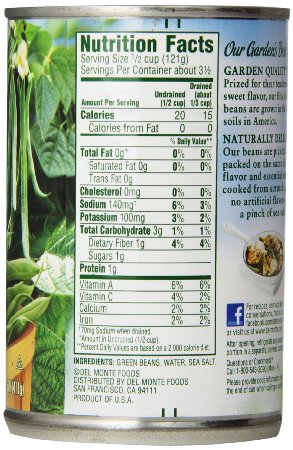
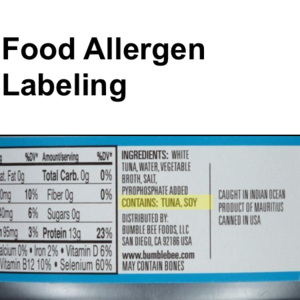

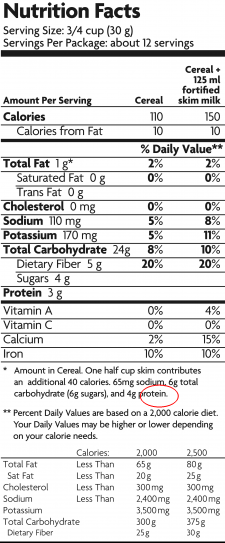

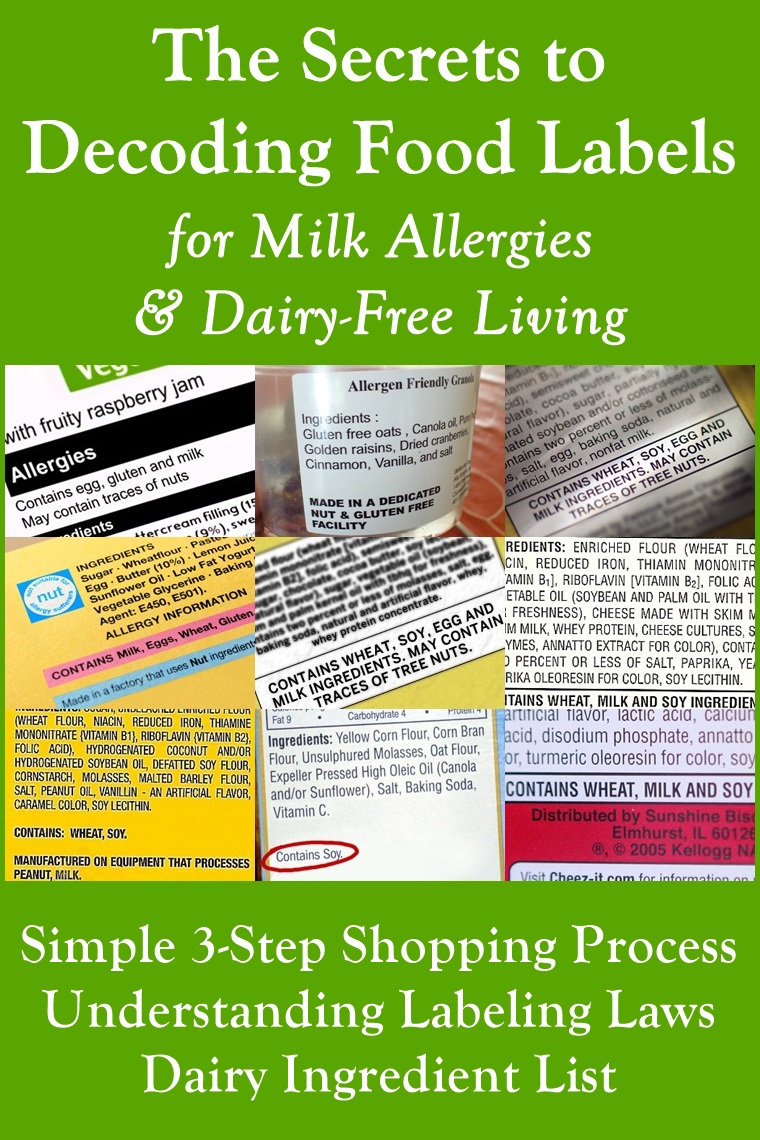
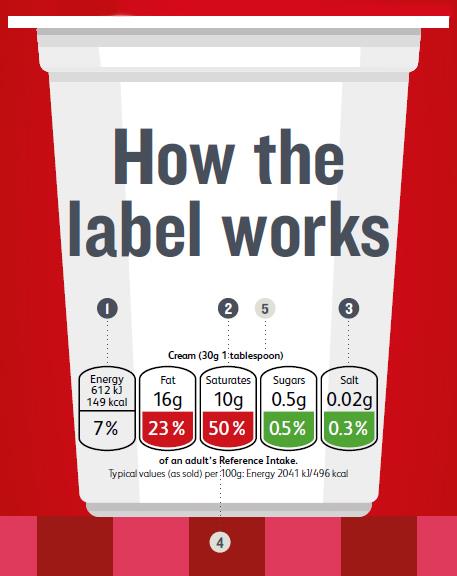

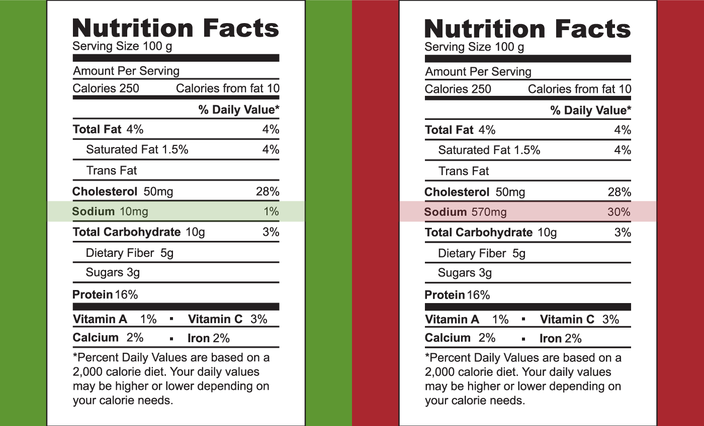





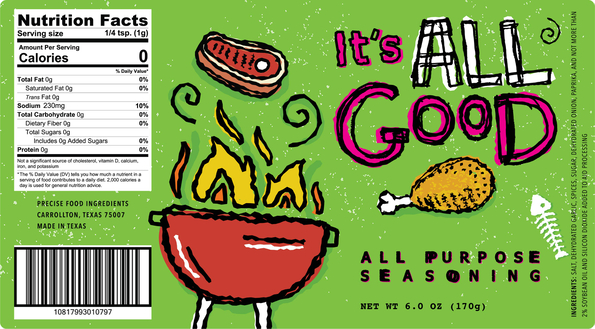


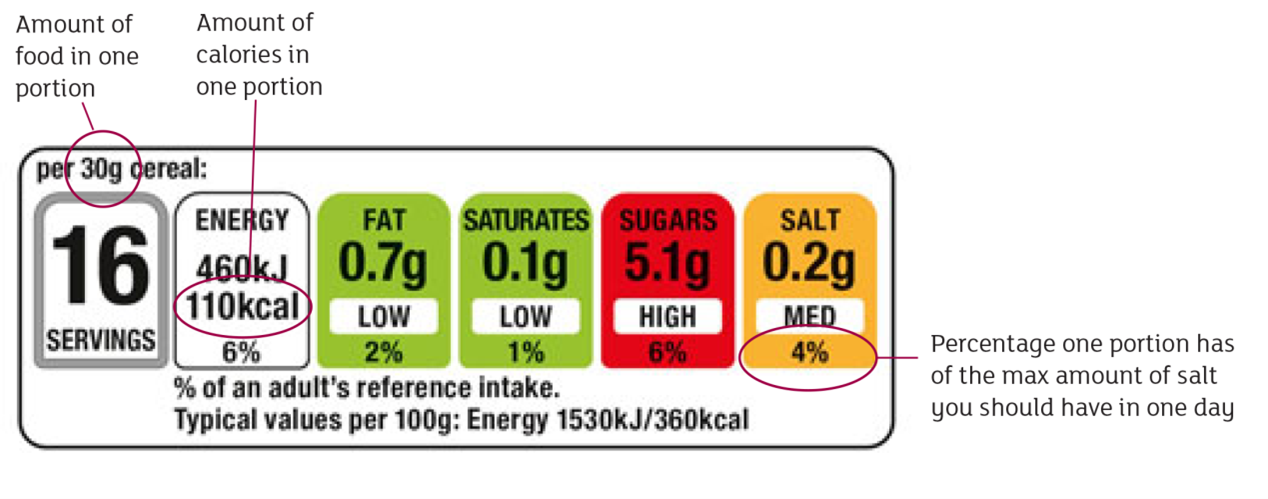
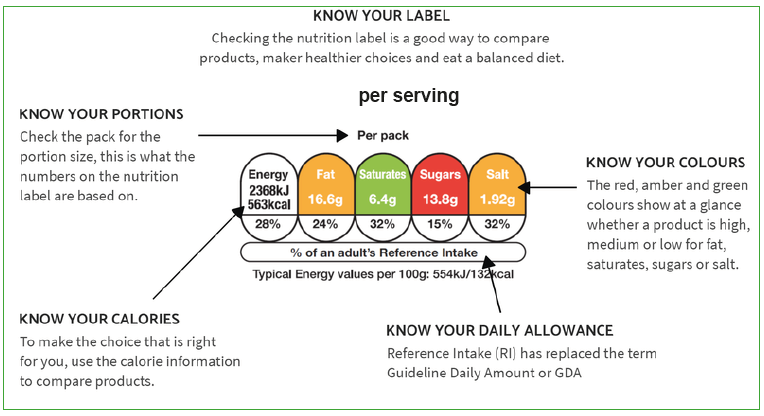
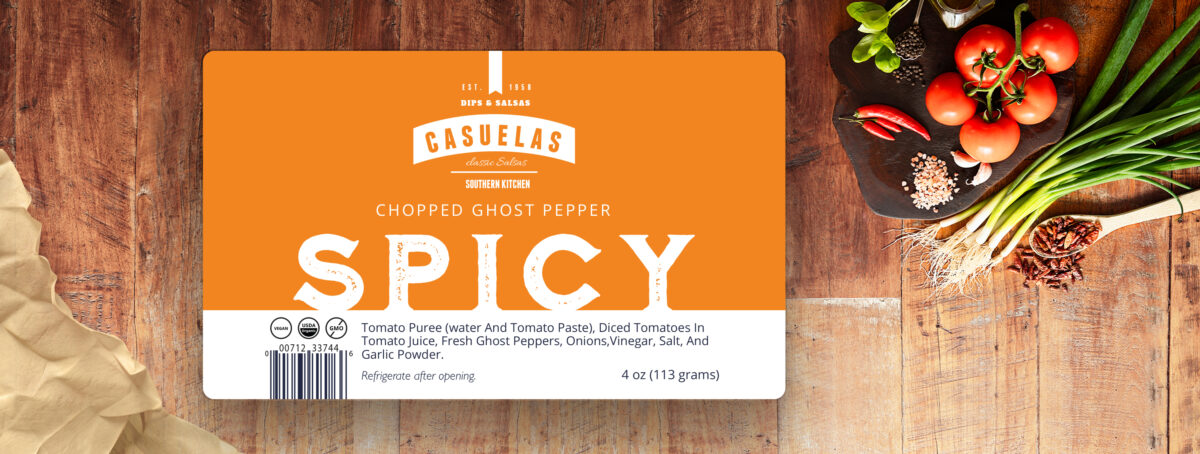
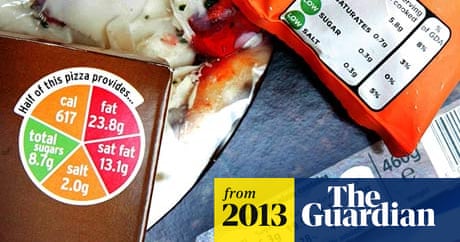
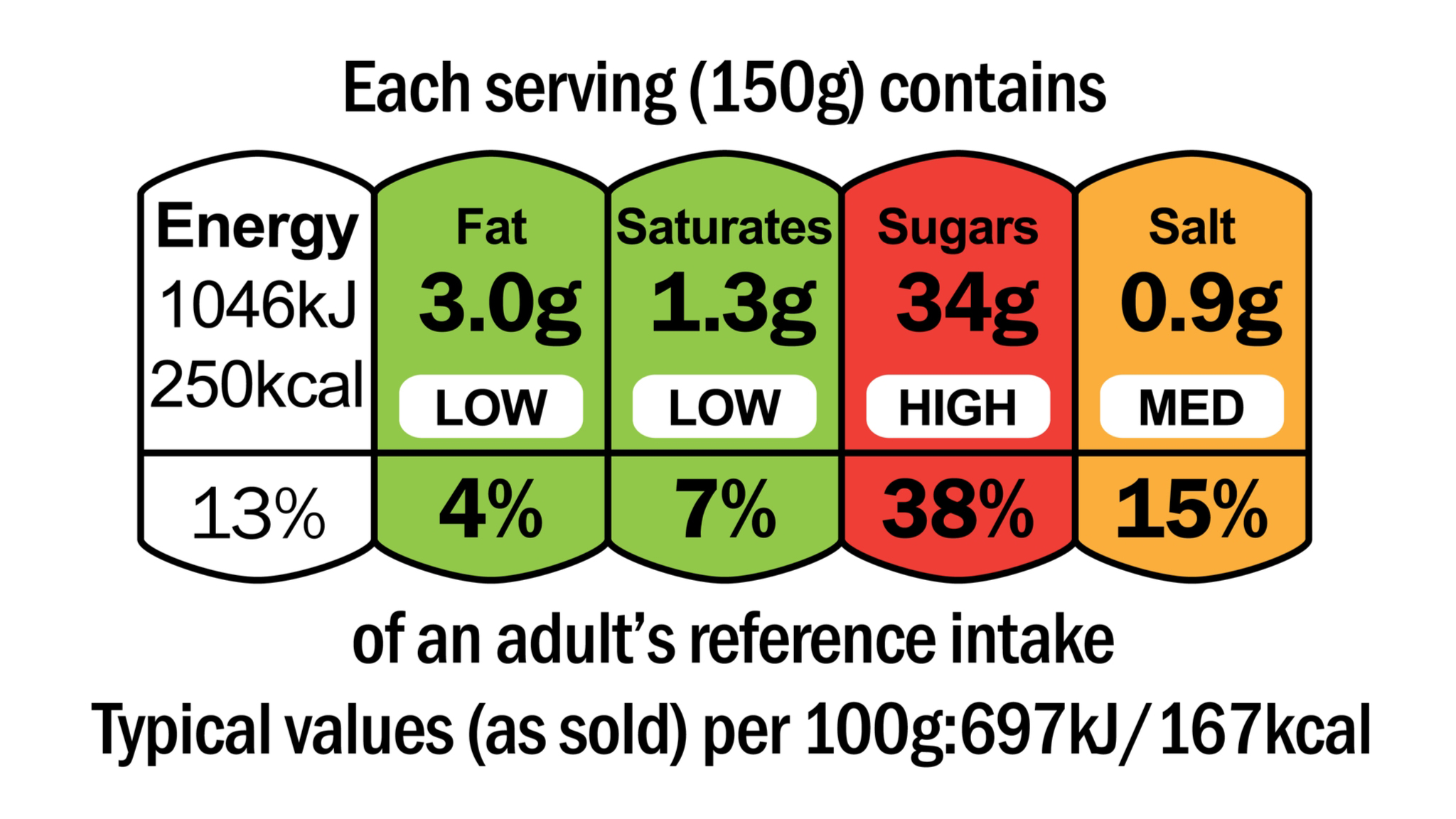
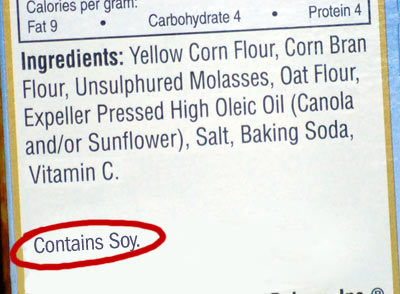
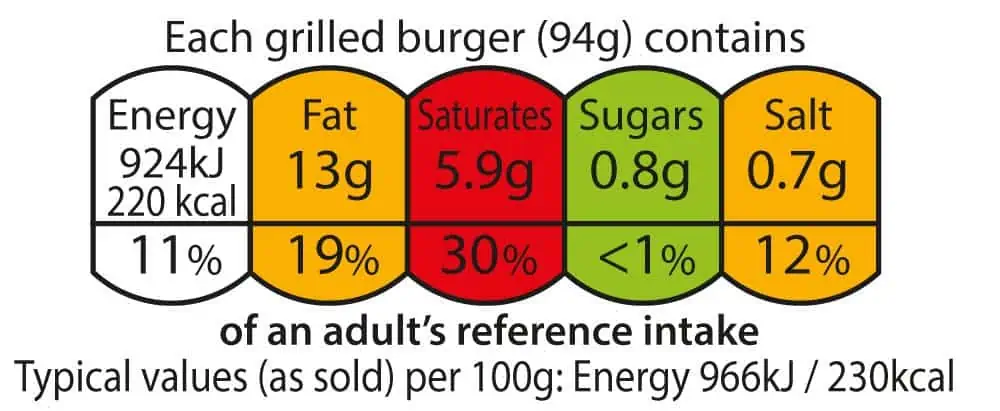

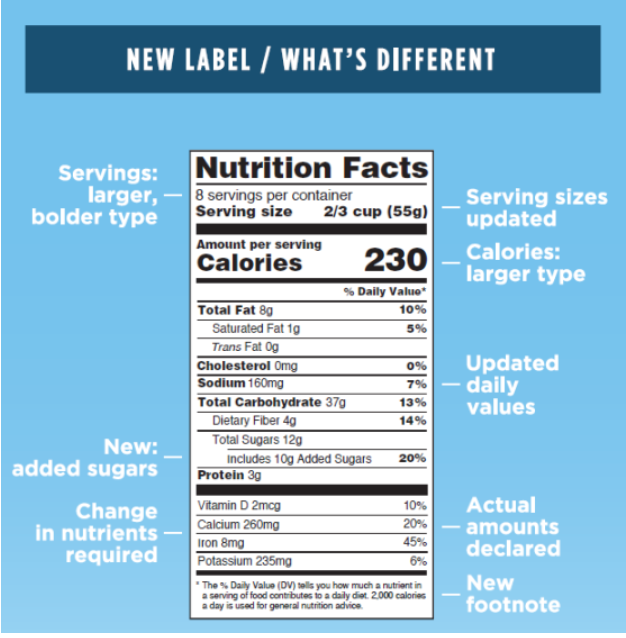

---BACK.jpg)

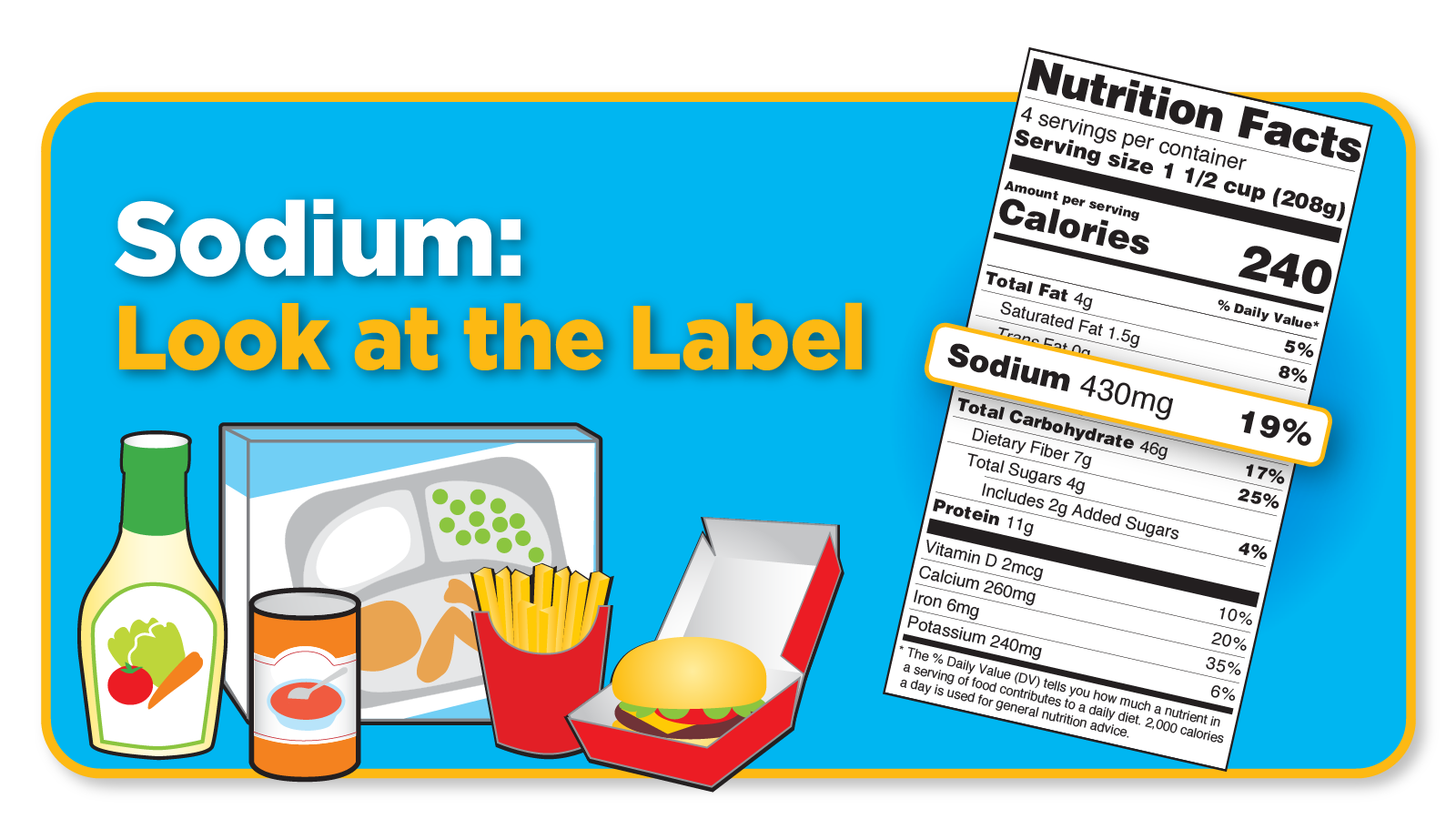
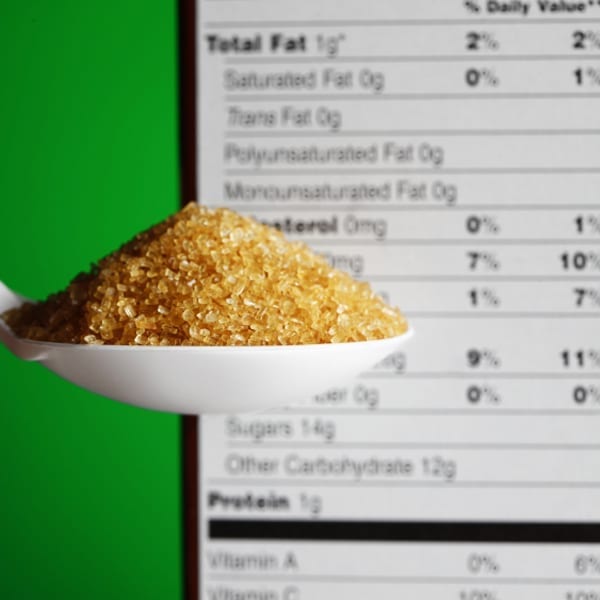

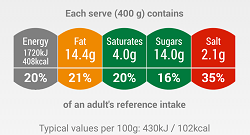
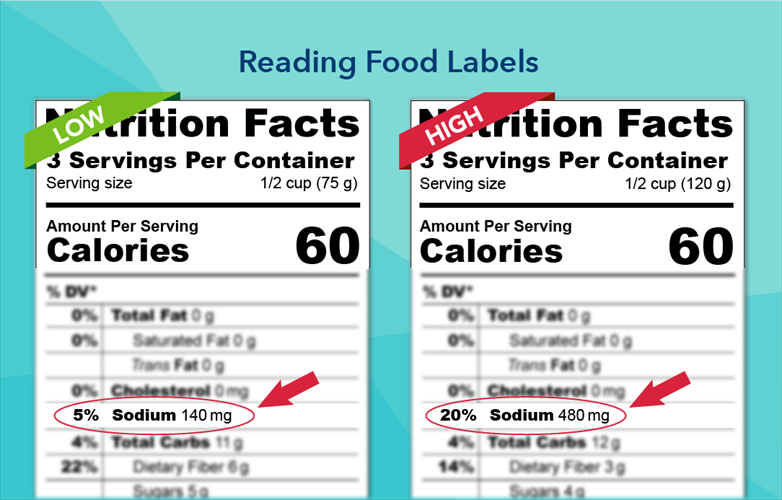


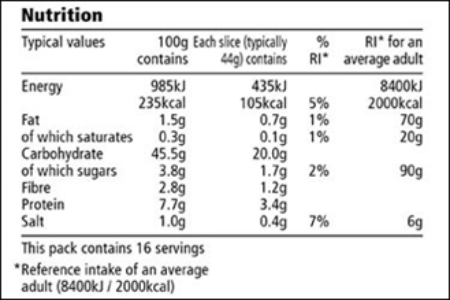


Post a Comment for "43 salt on food labels"